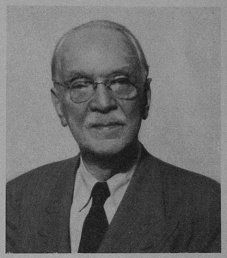Albert Verley
Albert Verley was born on 8 January 1867 in Quiestède (France). His father owned a sugar refinery and a large agricultural holding. He was highly interested in physical and chemical processes, made his bachelor in mathematics and physics and finally graduated with a doctor's degree in chemistry from the renowned "Faculte des sciences de Paris". Albert Verley then focused on odors and perfumes. In the following years he invented several new production processes like a revolutionary way to produce synthetic vanillin, a way to extract the essence from roses and he invented industrial methods to produce camphor as well as synthetic rubber. For the production and marketing Albert Verley founded companies like the "Distillerie Francaise de la Vallee des Roses", the "Compagnie Francaise du Camphre" and in the US the "Albert Verley Company". In the early years of the 20th century Albert Verley had become a successful and wealthy industrialist.
Beside his interests in science Albert Verley was also into music in his leisure time. As luck would have it Conrad Satie, chemist and the brother of composer Erik Satie, was an employee at one of the Verley companies. This brother could convince Erik Satie to teach composition privately to Albert Verley. That was a major concession because Erik Satie didn't give private lessons in general and Albert Verley remained the only student in the lifetime of Erik Satie!
The work of Albert Verley and Erik Satie began in 1916. One of the first compositions by Albert Verley were the "Pastels sonores No.1 and No.2, for piano", which Erik Satie immediately orchestrated and afterwards set for 2 pianos. Erik Satie also recommended a young repetiteur to Albert Verley for his studies, by the name of Vladimir Golschmann. Albert Verley supported the young musician and with his help a new orchestra was founded in Paris with the conductor Vladimir Golschmann in 1919 - the Concerts Golschmann. At one of these concerts in 1920 the premiere of the first two "Pastels sonores" by Albert Verley in the orchestration by Erik Satie took place. Albert Verley also created a composition award in 1921, the "Prix Verley". At the Concert Golschmann several new compositions by different composers were presented to the audience and the spectators could choose the better one which was immediately awarded the "Prix Verley". The award was given to Arthur Honegger's "Pastorale d'ete" and Stan Golestan's "Hora". After two concerts the Prix Verley was discontinued to unknown reasons.
Albert Verley and his support of the contemporary French music scene was immense. The Concerts Golschmann - with Verley's financial benefit - performed many compositions of the "Groupe des Six" and so promoted the music by composers like Honegger or Milhaud. Alexandre Tansman, another Paris-located composer, dedicated his "Deux mouvements, for cello quartet" (1938) to Albert Verley and Darius Milhaud orchestrated a "March" by him.
The Concerts Golschmann became a renowned orchestra in the 1920s and so Valdimir Golschmann received a call from the Saint Louis Symphony Orchestra where he was appointed principal conductor in 1931. There Golschmann continued to perform compositions by Albert Verley and premiered several of his later works in the 1930s.
In his late years Albert Verley composed, continued his interest in mathematics and published a book about probability and of course researched in chemical processes and developments. Albert Verley died on 27 November 1959 in Neuilly-sur-Seine (France).
Among the compositions by Albert Verley are:
- Pastels sonores No.1 "Cloches dans la vallée"N
(orchestrated by Erik Satie and set by him for 2 pianos) - Pastels sonores No.2 "L'aurore aux doigts de rose"
(also orchestrated and set for 2 pianos by Erik Satie) - Pastels sonores No.3
- Pastels sonores No.4
- Pastels sonores No.5
- Pastels sonores No.6
- Pastels sonores No.7 "Sclava" (1920)
- Pastels sonores No.8
- Pastels sonores No.9 (1923)
- Pastels sonores No.10 "Un adieu"
- Le Masque de la mort rouge, for orchestra
(piano reduction by Erik Satie) - Chevauchée fantastique
- Procession fleurie
- Reflets d'Espagne
- Chanson tourangelle
- March
(orchestrated by Darius Milhaud) - Figures de Ballet
- Chanson du vent, for voice and piano (on a text by Jean Lahor)
- Menuet tendre pour violon et piano
- Suite for orchestra "Paques fleuries"
It is unknown where the music manuscripts of Albert Verley are located nowadays. Only the "Pastels sonores No.2" in the version for 2 pianos by Erik Satie were published. And the score library of the Saint Louis Symphony Orchestra holds a few manuscripts from their performances of Verley works under Golschmann in the 1930s. The whereabouts of the other compositions by Albert Verley are unknown.
In my possession is a autograph score of the "Pastels sonores No.7 - Sclava" in the version for piano. The score contains only the "Prelude" of the composition. I can only assume that this Prelude is only a part of the complete composition.
The Pastels sonores No.7 "Sclava" is originally composed for orchestra and was premiered on 23 December 1920 with the Concerts Golschmann under the direction of Vladimir Golschmann.
Due to the difficulties to find scores with music by Albert Verley I present here the piano version of "Pastels sonores No.7 - Sclava - Prelude":
